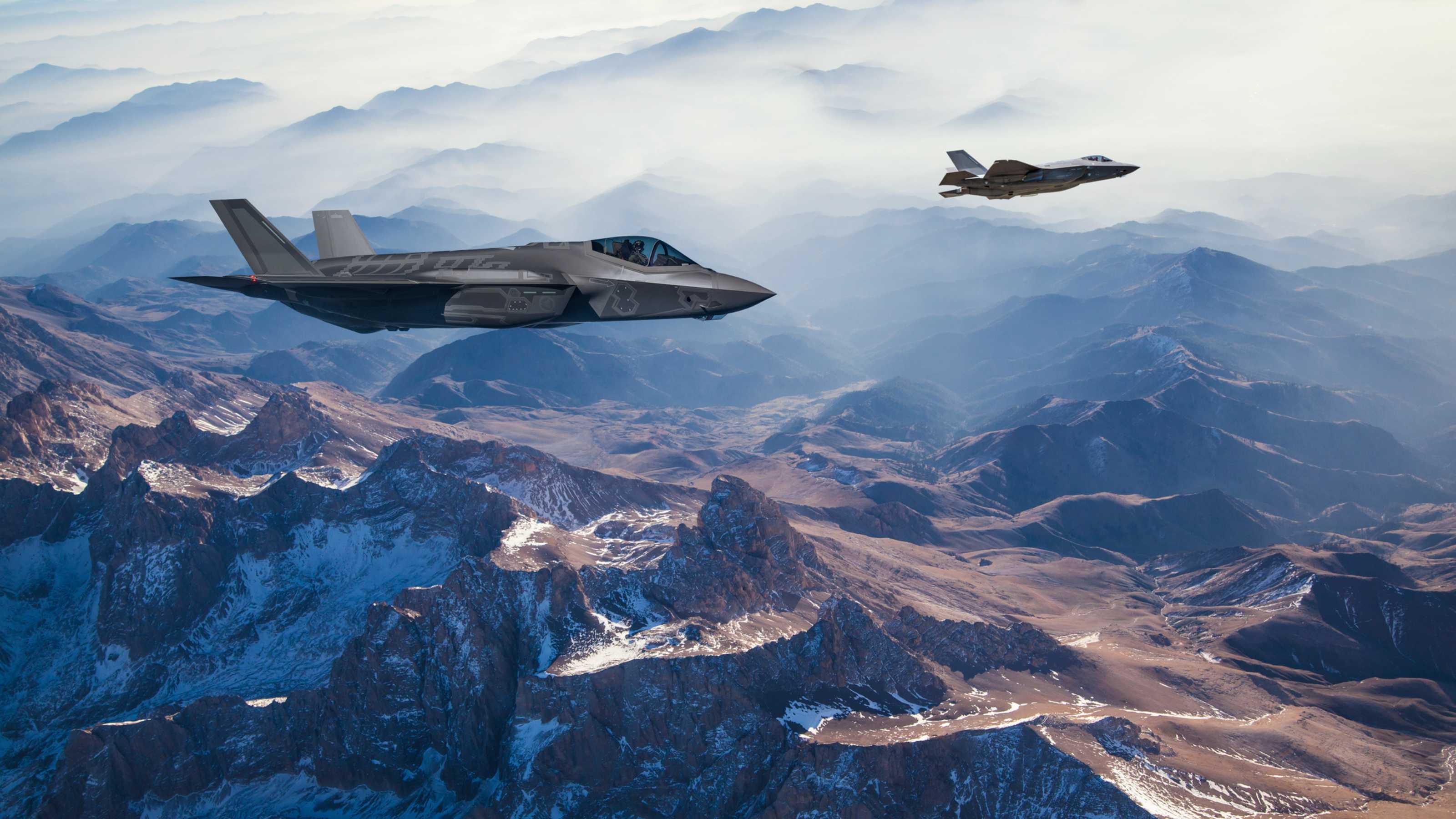Global tensions are rising in 2025. Russia’s invasion of Ukraine has been dragged by the war of attrition for over three years. Israel continued its military campaign in Gaza, along with the United States, carrying out a surgical strike targeting Iran’s nuclear sites and the leadership of the regime.
Governments around the world took action with attention. In late June, NATO, a military alliance of 32 countries, including the US, Canada and most of Europe, held regular summits in The Hague.
Member States have agreed to significantly raise their defensive spending targets significantly from the traditional 2% to 5% of GDP.
Subscribe to Kiplinger’s personal finances
Be smarter, better informed investors.
Save up to 74%
Sign up for Kiplinger’s free e-newsletter
Remember profits and prosperity with expert advice on investments, taxes, retirements, personal finances and more – directly to email.
Profit and prosperity with the advice of the best experts – directly to your email.
This could have been influenced by continuing concerns about Russian President Vladimir Putin’s expansionist ambitions, along with renewed pressure from the Second Trump administration, who is vocally critical of America’s oversized role in NATO.
Together, these developments created a strong tailwind for aerospace and defense ETFs, which attracted a large influx of 2024 and 2025.
While some investors use the funds traded on these exchanges as hedges against geopolitical instability, others see them as a way to benefit from the surge in global military spending.
However, not all aerospace and defense ETFs are created equally. Before investing, it is important to understand how each fund chooses its holdings and weights it. Because these options can drive very different performance outcomes.
What will happen to the aerospace and defense ETFs?
Aerospace and defense ETFs may sound like a narrow niche, but their holdings can be surprisingly diverse. These funds are not filled with fighter jets and missile manufacturers, but they certainly are represented.
The industry actually includes a wide range of manufacturers, suppliers, service providers and contractors who support defense and aerospace operations in a variety of ways.
Most defensive ETFs are usually assigned to major major contractors, large companies building full weapon systems and platforms. The Big 5 includes the following:
Himars Rocket Systems, the Black Hawk Helicopter, is the manufacturer of the F-35 Fighter Jet.
Formerly Raytheon, RTX (RTX) produces not only Tomahawk Cruise Missile Missile Defense Systems, but also Patriot missile defense systems.
Northrop Grumman (NOC) is responsible for the B-21 Raider stealth bombers and various missile defense systems.
Boeing (BA) supplies military aircraft such as the F/A-18 Super Hornet and AH-64 Apache attack helicopters.
General Dynamics (GD) will build nuclear submarines for Abrams Tanks, Stryker Armored Vehicles and Virginia Class.
These companies dominate US defense procurement and lobbying. They design and provide a complete platform that makes up many of the weapons of modern military forces.
However, many other aerospace and defense companies play a more specialized role, supplying key components rather than complete systems. for example:
GE Aerospace (GE) manufactures jet engines primarily for both military and commercial aircraft.
L3Harris Technologies (LHX) focuses on defense electronics, communication systems and space sensors.
TransDigm Group (TDG) supplies highly designed aircraft components, including actuators, ignition systems, and cockpit controls used in both military and commercial platforms.
Some of the main names in the space are not pure theatre. They could be a large industrial conglomerate, but they are focused on defense rather than exclusive.
Honeywell International (Hon) is a good example. It provides avionics, navigation and surveillance systems to the military, but also has major ventures in industrial automation and building technology.
Aerospace and defense exposures are not limited to the US either. Europe is in the midst of a push of re-arming, with many local contractors attracting the attention of more investors.
Rheinmetall (Germany) manufactures tanks, artillery and ammunition systems.
Leonardo (Italy) supplies helicopters, aircraft and electronics.
Saab (Sweden) produces the Gripen Fighter Jet and Radar system.
Dassault Aviation (France) will build the Rafale Multirole Combat Aircraft.
BAE Systems (UK) offers a wide portfolio spanning land, sea, air and cyber.
Some aerospace and defense ETFs could cast the net even more widely by including cybersecurity, surveillance, and intelligence contractors. Although these companies do not produce physical weapons, they play an increasingly important role in modern defense.
Booz Allen Hamilton (BAH) provides consulting and technology solutions to the Pentagon and intelligence agency.
Palantir Technologies (PLTR) develops a data analytics platform used for military intelligence, targeting and situational awareness.
Depending on the ETF, the definition of “defense” can extend beyond tanks and aircraft and include the digital backbone of national security. That’s why it’s paid to see what each fund actually holds.
How to Choose the Best Aerospace and Defense ETFs
We started by excluding leverage and inverse ETFs that are designed for short-term trading and are not suitable for long-term investors. We focused only on long dedicated funds that provided undecreasing exposure to the aerospace and defense sectors.
To ensure cost efficiency and ease of transaction, the expense ratio was capped at 0.60% and the median bid ask for 30 days below 0.25%. We also set a minimum of $500 million managed assets (AUM) to reduce the risk of fund closures and ensure sufficient size and profits for investors.
These screens helped us identify funds that were built to be affordable, liquid and sustainable. These are important attributes for those looking to invest in the long-term trends driving defense and aerospace spending.
iShares US Aerospace & Defense ETF
(Image credit: Getty Images)
Managed assets: $8.3 billion Ratio: 0.40% Median bid spread of 30 days: 0.03%
iShares US Aerospace & Defense ETF (ITA) has one of the longest track record in the category launched in May 2006.
It tracks the Dow Jones US Select Aerospace & Defense Index and holds a centralized portfolio of 38 domestic companies. Because of its size and longevity it is often considered a default option for many investors in this sector.
However, ITA is market capitalization weighting, creating a significant imbalance. GE Aerospace accounts for 20.7% of its portfolio, followed by RTX at 14.7% and Boeing at 8.8%.
The allocation then fell quickly, with Howmet Aerospace (HWM) being the fourth largest holding at just 4.7%.
Find out more about ITA on the ISHARES provider site.
Investco Aerospace & Defense ETF

(Image credit: Getty Images)
Managed assets: $5.7 billion Ratio: 0.57% Median bid spread over 30 days: 0.05%
The Invesco Aerospace & Defense ETF (PPA) tracks Spade Defense Index, a bespoke benchmark developed by defense-centric analyst companies rather than a major index provider.
The index has historical data dating back to December 1997, but the PPA itself was released in October 2005 and has given it a slightly longer track record than ITA.
The PPA uses a modified market cap weighting approach that limits the impact of large companies. This helps to avoid overexposure to diverse companies, where defense is one business segment, creating a more balanced portfolio.
It shares many holdings with ITA, but it is especially less top heavy.
Find out more about PPAs on the Investco provider site.
SPDR S&P Aerospace & Defense ETF

(Image credit: Getty Images)
Managed assets: $3.6 billion Ratio: 0.35% Median 30-day bid spread: 0.06%
SPDR S&P Aerospace & Defense ETF (XAR) tracks the S&P Aerospace & Defense Select Industry Index.
Instead of being weighted by market capitalization, XAR benchmarks use an equal weight methodology that gives each one that holds roughly the same allocation regardless of size. This reduces concentration risk and prevents the largest contractor from controlling the portfolio.
XAR currently has 36 companies, with a top position that reflects recent outperformers during the recent regeneration cycle.
Equivalent weighting increases exposure to medium and small caps. This tends to focus more on the aerospace segment than pure defense.
For more information about XAR, please visit the SPDR provider site.
Global X Defense Tech ETF

(Image credit: Getty Images)
Managed assets: $3 billion dollars ratio: 0.50% Median bid spread of 30 days: 0.05%
The Global X Defense Tech ETF (SHLD) was launched in September 2023 and gained rapid traction, recording an annual revenue of 64% as of June 30, 2025.
SHLD tracks its own Global X Defense Technology Index, taking a broader approach than traditional aerospace-heavy ETFs such as ITA, PPA, and XAR. Rather, it focuses on military hardware and defense technology rather than commercial aerospace.
General holdings of ITA, PPA, and XAR include names such as Lockheed Martin, RTX, and General Dynamics. However, Shld has expanded beyond the US, exposed to European defence companies such as Leonardo, Rheinmetall and Thales.
In particular, it focuses on intelligence with Palantir Technologies appearing as the third largest holding.
Find out more about SHLD on the Global X provider site.
Select Stoxx Europe Aerospace & Defense ETF

(Image credit: Getty Images)
Managed assets: $1 billion dollars ratio: 0.50% Median bid spread of 30 days: 0.10%
Select Stoxx Europe Aerospace & Defense ETF (EUAD) offers internationally focused alternatives on US-centric funding such as ITA, PPA and XAR.
It only includes European Listing companies or American Deposit Receipts (ADRs) that track the Stoxx Europe Total Market Aerospace & Defense Index and generate at least 50% of revenue from aerospace and defense.
EUAD is packed with top European competitors, including Airbus, Rhinemetal, BAE Systems, Thales and Leonardo. In addition to the heritage of automobiles, Rolls-Royce is one of the leading manufacturers of aircraft engines.
Until June 30th, the fund has grown 78% per year amid growing interest in regeneration work in Europe.
Find out more about EUAD on the STOXX provider site.
